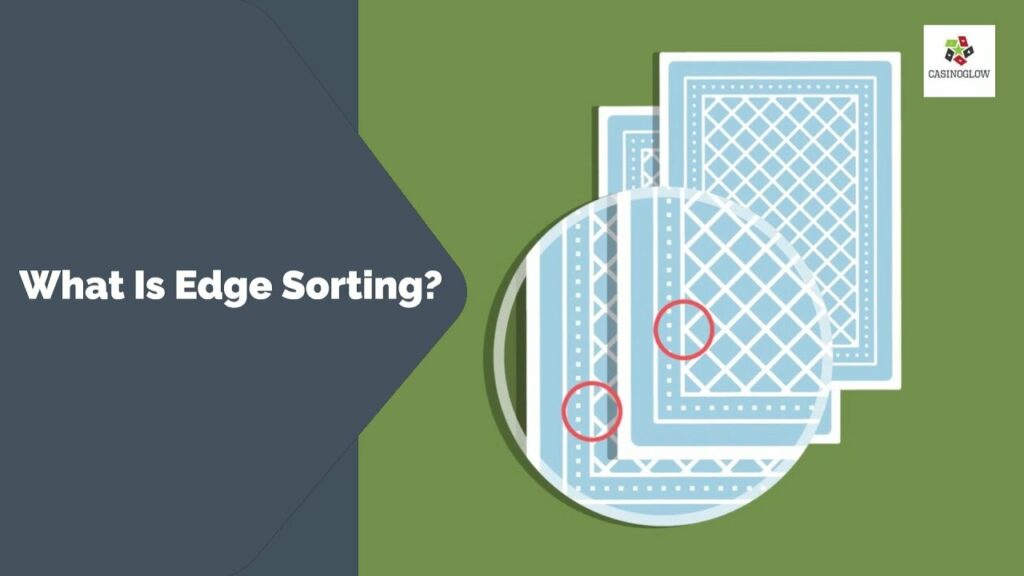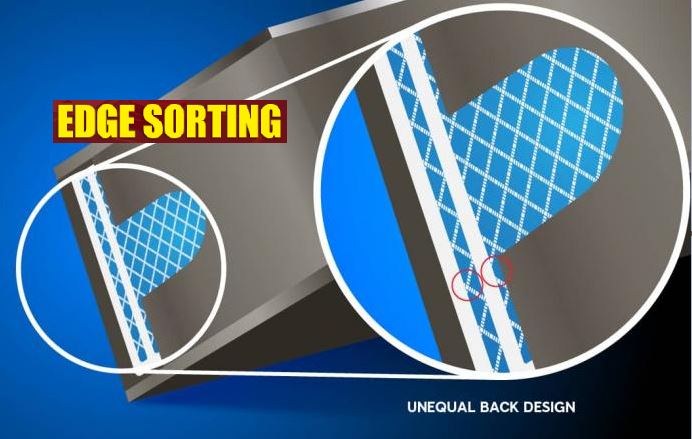Mastering Baccarat: An In-depth Analysis of Edge Sorting
In the labyrinth of baccarat strategies, edge sorting stands out as an intriguing practice that raises the stakes by bending rules. It’s a captivating amalgamation of sharp observation, astute skill, and a hint of deception, making edge sorting a riveting and controversial technique in baccarat.

The Advantageous Art of Edge Sorting: Is It the Secret Weapon in Baccarat?
Imagine standing at the edge of a battlefield, armed with secret tactics that can help you sway the game in your favor. This is the essence of advantage gambling – using legal strategies to whittle down the house edge. Amongst the many tactics, edge sorting in baccarat emerges as a nuanced art that shifts the focus from luck to skill.
Edge sorting works on the principle of identifying minor flaws or deviations in the patterns imprinted on the reverse of playing cards. By utilizing this knowledge, players can anticipate which cards are likely to appear next, aiming for the desirable high-value cards (6s, 7s, 8s, and 9s) to land on their betting position, while sidestepping low-value and picture cards.
Delving Deeper into Edge Sorting: A Glimpse of the Subtle Maneuver
Idealistically, each playing card should bear an identical pattern on the back, rendering them indistinguishable. Yet, manufacturing flaws occasionally sneak in, creating small irregularities and uneven edges.
These minute discrepancies are the bread and butter of edge sorting. Commonly, playing cards carry a diamond pattern on the back, which may show subtle variations from one side to the other. Identifying these marginal differences can be the gateway to edge sorting mastery.
However, being an edge sorter is not just about having keen observational skills. It also requires a knack for tactfully steering the dealer’s actions. For instance, players may request the dealer to rotate a particular card by 180 degrees, often under the guise of superstitions. If the dealer obliges, the player can identify that card during future deals.
Edge sorting primarily targets the high-value cards such as 6s, 7s, 8s, and 9s. If these cards are successfully rotated, a player can acquire an advantage of up to 6%. However, achieving this advantage demands sharp eyesight, the talent for dealer manipulation, and a shuffling style that keeps the cards from rotating.
The Edge Sorting Quandary: Does It Still Hold Water?
The digital age, where information is at everyone’s fingertips, has brought edge sorting into the limelight. This has led card manufacturers and online casinos to establish measures to counteract it. Adding to the complexities, the legality of edge sorting remains ambiguous. Even though it does not fit the traditional definition of cheating, it relies on subtle manipulation of the dealer and mental marking of the cards. This has led courts in the USA and the UK to label it as cheating.
In spite of this, while edge sorters may face lawsuits and forfeiture of their winnings, they aren’t subject to criminal charges.

The Tale of Phil Ivey: A Landmark in the Edge Sorting Saga
Phil Ivey, a globally acclaimed gambler, thrust edge sorting into the global spotlight when he was accused of using it. In a sensational episode at London’s Crockfords Casino in 2012, Ivey used edge sorting to win over $10 million.
Despite Ivey’s claim that edge sorting was a part of “legitimate gamesmanship”, he lost the ensuing court case against Crockfords and the subsequent appeal. The bone of contention was not Ivey’s ability to spot the differences in card patterns, but his manipulation of the dealer. The lawsuit saga continued when Atlantic City’s Borgata Casino also took Ivey to court, leading to significant ramifications on his illustrious career.
The story of Phil Ivey and edge sorting serves as a potent reminder of the thin line between strategy and manipulation in the realm of gambling.
Conclusion
Baccarat, like many casino games, is often perceived as a battle of luck. However, the introduction of edge sorting adds a layer of skill and strategy that subverts the traditional paradigm. Despite its potential to drastically change the odds in favor of the player, the controversial nature of edge sorting has made its acceptance in the world of gambling problematic. Caught amidst the tug-of-war between strategy and manipulation, edge sorting continues to intrigue enthusiasts and professionals alike. The story of Phil Ivey only adds fuel to this blazing topic. As we step forward in this digital age, the future of edge sorting is uncertain but its contribution to the landscape of gambling remains undeniable.
FAQ
-
What exactly is edge sorting?
Edge sorting is an advanced strategy employed in card games, including Baccarat, which revolves around recognizing minute discrepancies in the card’s design on the back to anticipate the value of the card.
-
How does edge sorting provide an advantage in Baccarat?
By successfully identifying minor variations in the card patterns, a player can predict the value of upcoming cards, granting them significant advantages over the house.
-
Is edge sorting considered cheating?
The line is blurred when it comes to edge sorting. While some see it as a strategic use of inherent game elements, it is often viewed as cheating because it involves manipulating the game’s regular course and it has been ruled as such in courts in both the USA and UK.
-
Can edge sorting be used in online Baccarat?
Implementing edge sorting in online Baccarat is nearly impossible as the cards’ virtual renderings do not bear the physical imperfections exploited in edge sorting.
-
Who is Phil Ivey and what is his connection to edge sorting?
Phil Ivey, a renowned professional gambler, brought the method of edge sorting to the spotlight when he won millions in Baccarat using this technique. However, he faced legal repercussions, with courts ruling his actions as cheating.
-
How do card manufacturers and casinos combat edge sorting?
To prevent edge sorting, card manufacturers are striving to create completely uniform card designs. Simultaneously, casinos train dealers to identify attempts at edge sorting and decline requests that facilitate it.
-
Can any player learn and use edge sorting effectively?
While it’s possible to learn the concept of edge sorting, its effective application requires keen eyesight, quick decision-making, and the ability to convince dealers to act in ways that favor the technique. It is a complex and difficult strategy to master.





